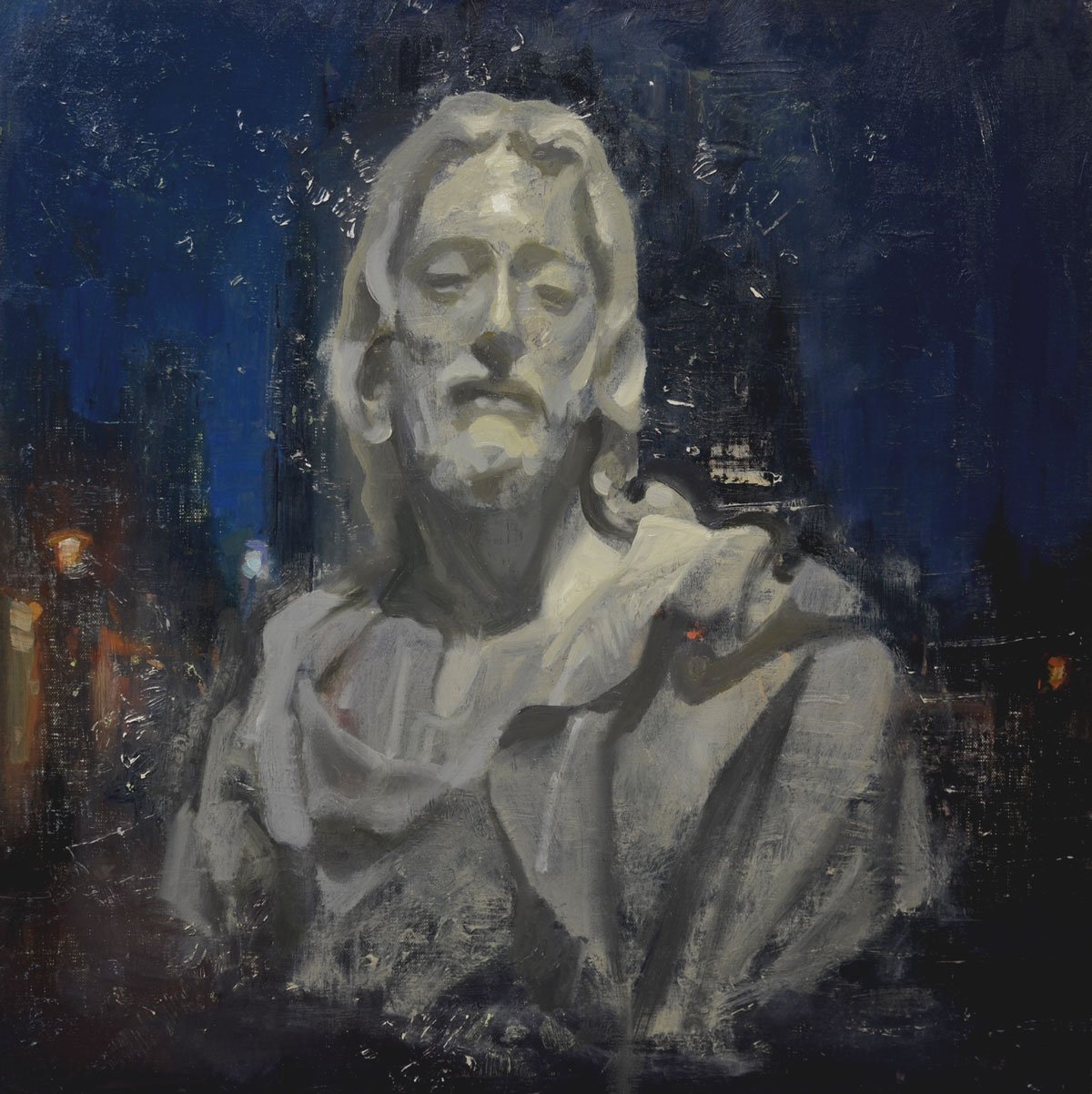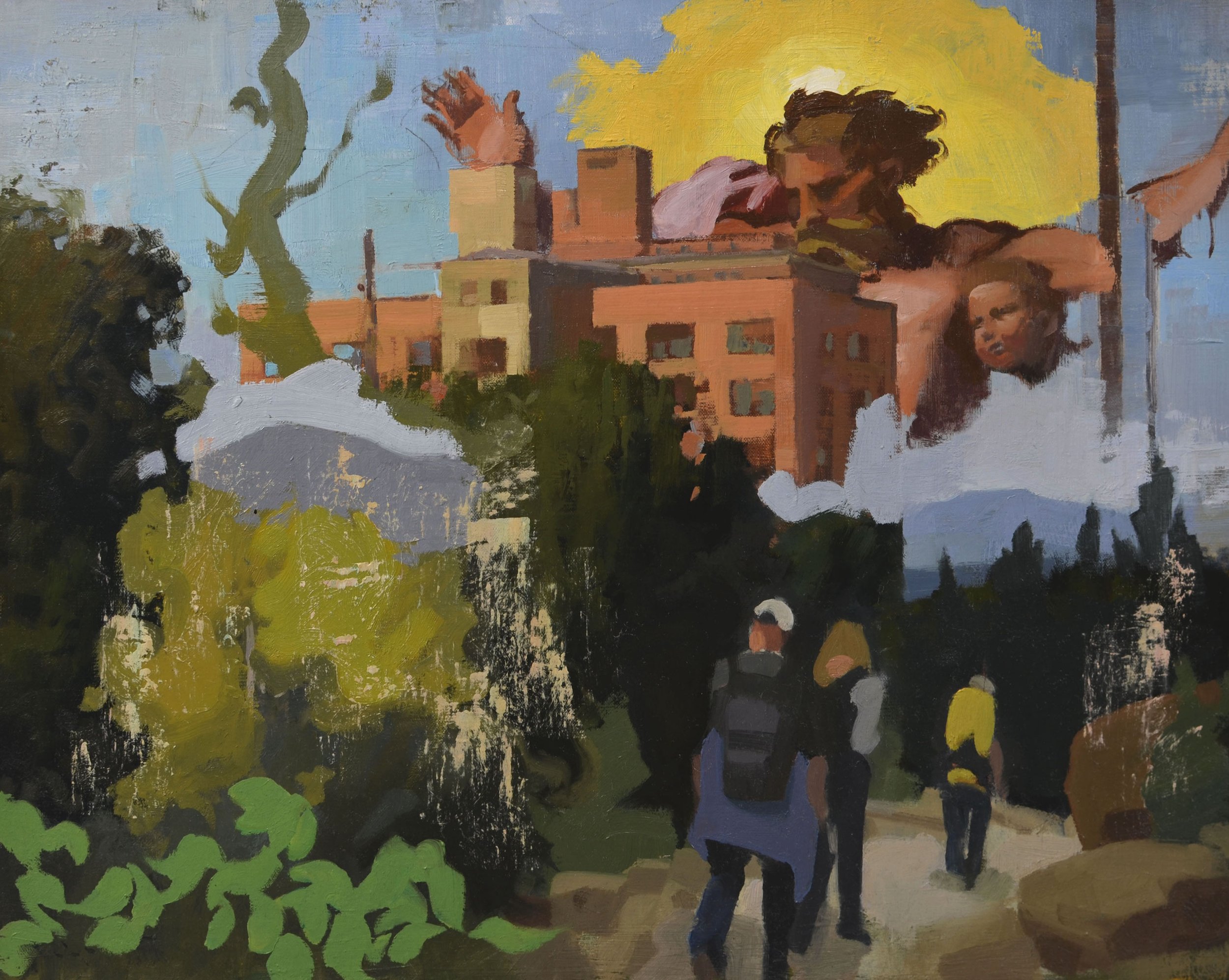Interview with artist John Lasater
John P. Lasater IV is full-time painter living and working in Siloam Springs. He is a representational painter who has earned more than 50 national and international awards over the last 10 years alone, including the Top 100 at the BP Portrait Award 2019 held at the National Portrait Gallery in London. John also conducts plein air workshops in Arkansas and around the US. More of his work can be found at Justus Fine Art Gallery in Hot Springs and at his website lasaterart.com.
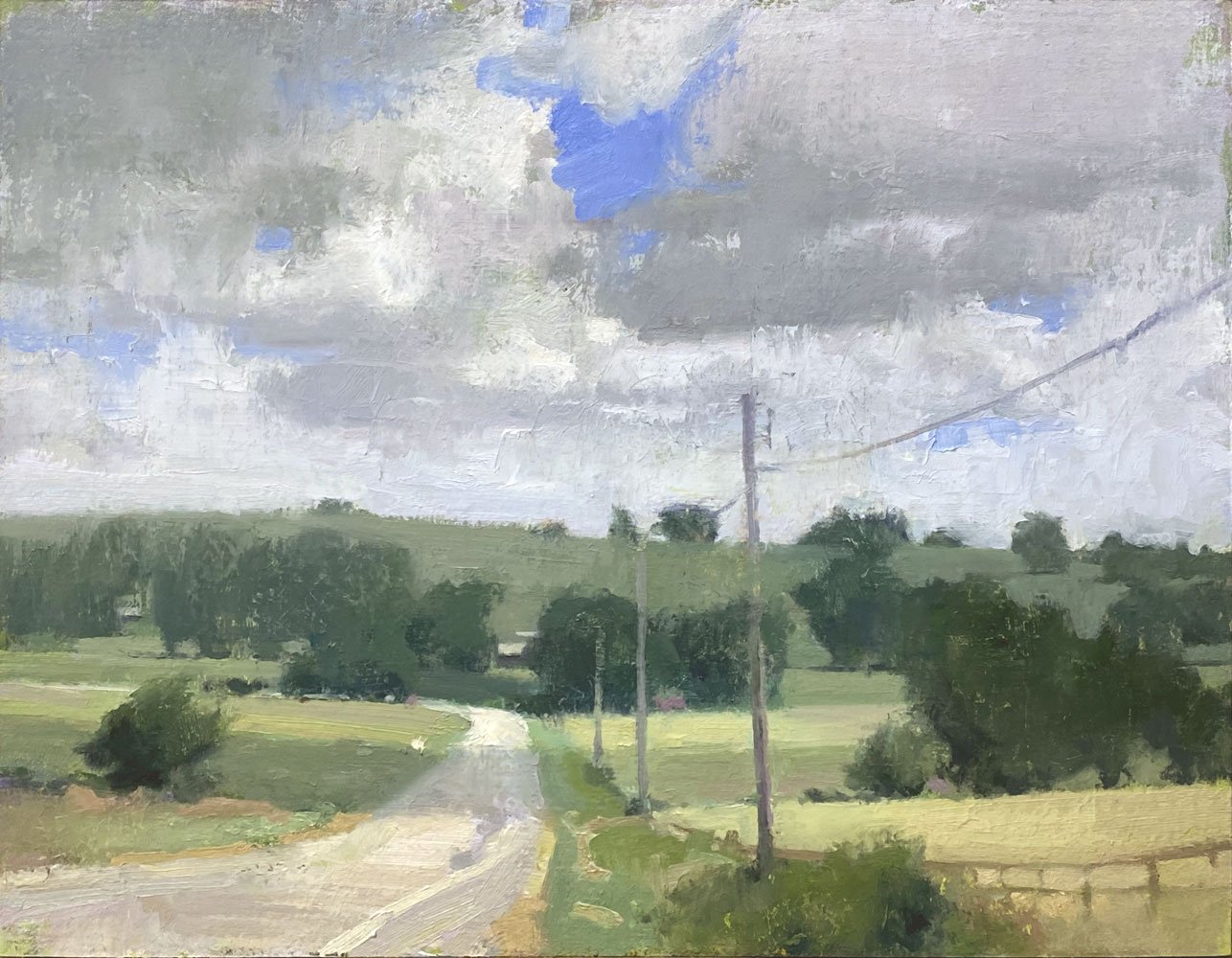
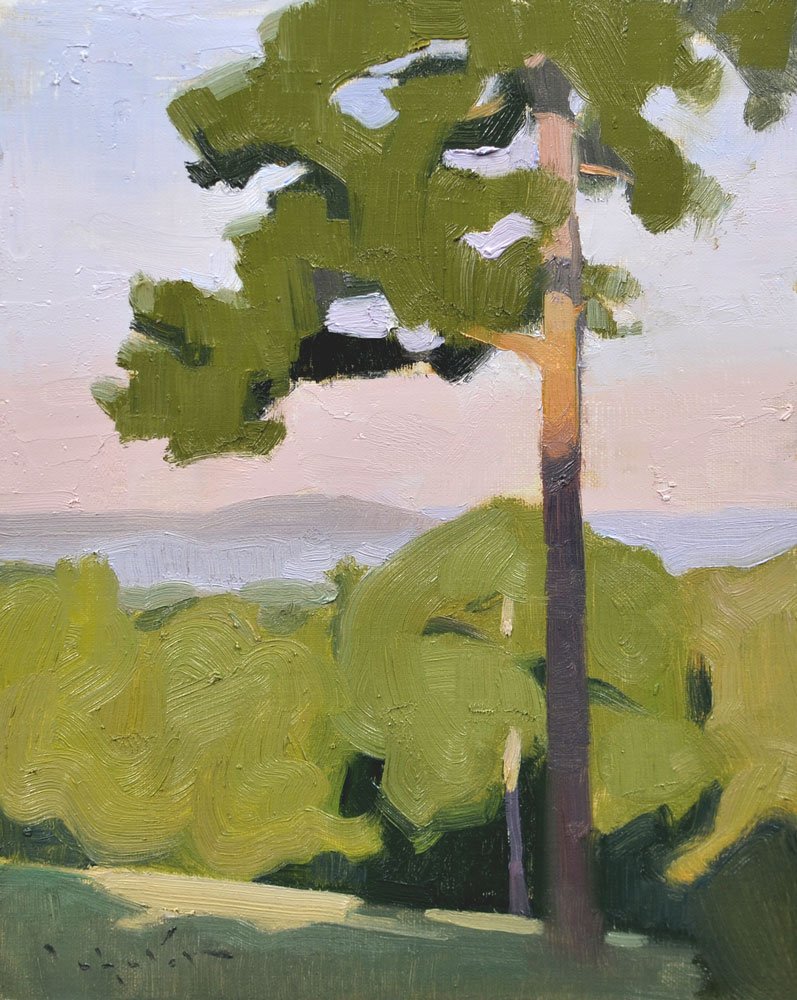

AAS: John, I believe you are originally from Texas. What brought you to Arkansas?
JL: Hi Philip, thank you for this opportunity. I had just turned 18 when I moved here, so I’m not sure much thinking went into the decision to come to Arkansas. The natural setting was intriguing, and I’ve always thought of small towns as idyllic, so I chose to come to John Brown University in Siloam Springs in 1988 to escape my hometown of Houston. I was mediocre as a student, and didn’t have much ambition, and my dad easily talked me into a degree in Business Administration.
Growing up, most of my friends were creative, so it’s always been my tribe. After graduating, my first job was in a greeting card company, and I quickly became friends with the designers and illustrators there. One of them in particular, Todd Williams, encouraged me to take up oil painting, and the blessed year of 2000 is when I began to paint.
It’s a twisted story as to how, but within a couple of years I went from being a business assistant to being a greeting card designer and illustrator, and I did that for about 10 years. In 2009, I left the job to paint full time. Northwest Arkansas became a long-term home after marrying a Siloam native, Kara, and having four children. We have a home out in the country with a beautiful westward view, and I wouldn’t trade it for anything.
AAS: When did you first realize you wanted to be a painter and that you had a natural talent for it?
JL: When I was about 12, my mom enrolled me in some charcoal lessons with a lady from our church. She taught me about expression, and we discovered that it came to me pretty naturally. I also had an art teacher, Mrs. Arnold, during my seven years of private school that was super encouraging.
It was my friend Todd Williams that really brought it out of me though. He had found success doing paintings from life, and was particularly drawn to plein air painting at the time. His enthusiasm was contagious, and several of us at the greeting card company bought French easels and went painting outside with him.
The natural next step was to seek out other role models, so in the early 2000s I attended some national workshops with John Budicin, C.W. Mundy and Carolyn Anderson, all of whom I have stayed in contact with. They each had a philosophical approach to teaching, and I learned to consider the why rather than the how, which was helpful as I am confined to self-study most of the time.
The best recent learning experience I had was at the 2016 JSS in Civita Summer Masterclass with Israel Hershberg in Italy. He opened up a world of art appreciation that was lacking from my self-taught education. Because of my time with him, I voraciously studied Western art history, and became proficient in understanding my art heritage. In 2017 Hershberg invited me to teach a workshop at his program, and if there were ever a feeling that I had reached the pinnacle of my painting career, however unworthily, that was it.
“In the art world where ‘concept is king’, I hope to demonstrate that the wholesome concept present in a landscape or portrait can be ennobling. Nature, represented well, has all the concepts within it.”
AAS: How do you define your style of painting and has it changed over the years?
JL: There are about 15-20 historical artists whose spirits I adore. I sift through them in my mind when I’m seeking out a motif, or a response to a subject. I use them like tools. When I’m seeking something to paint in the landscape, I might think about Camille Corot, Edward Hopper or Lois Dodd. When I’m painting a portrait, I think of Bronzino, Cezanne or Alice Neel.
Concerning style, it seems like painters are encouraged to become uni-dimensional; an unnatural concept to me as a creative person. Personal style be damned, I say. Someone else can look at my output and tell me what my style is, but soon as they do, my rebellious side wants to surprise them with something totally different. I join with James McNeill Whistler’s cry, “art for arts sake!”
I will say this, before I had much historical knowledge, painting was all observation and emotion. There has definitely been an improvement by adding imagination. Studying art history improved my imagination greatly.
AAS: You have earned many awards for your plein air paintings. One of my favorites is Symphony On The Bay. Tell me about it and your use of broad brush strokes. It is not a technique you use in all of your landscapes. In Symphony, it really communicates the magnificence of the panorama.
Symphony On The Bay, 16” x 16”, oil on canvas
JL: That one is a personal favorite also. It was painted on location in Galveston, and it describes a 15-minute observation, plus it’s a pretty large canvas. It required a more emotional response, no time to evaluate intellectually. I’m just glad I had the foresight to stop working on it when I did.
One has to be willing to be wasteful to pull off a plein air painting like that. I think of Charles Hawthorne’s teaching in those situations: “To really study, you must start out with large tubes of paint, and not stint in any way as far as materials go.”
For paintings like Symphony, I start with a rough outline of some of the shapes, and then proceed with thick paint. This piece in particular was more of a tonal exercise, so I wanted to establish the purity of the warm tones first. I distinctly remember whipping up a pile of yellow-white with my palette knife, and slapping it on to the canvas first. Then I proceeded to find the contrasting complementary bluish-purple that would provide the warm/cool balance I was aiming for. I probably took one of those larger brushes for the work of putting those darker colors on. You might also notice the scraping on the canvas, a roadmap of the push and pull that it takes to create the kind of softness that is so often present in nature.
AAS: Hidden Away is a completely different painting stylistically and of course the subject. When painting outside in the moment, I imagine light and shadow are especially important. Tell me about that painting.
Hidden Away, 14” x 18”, oil on canvas
JL: You’re right, that was almost polar opposite in terms of approach. I spent four one-hour sessions at this location in Siloam Springs trying to patiently describe the experience I was having observing the light and shadow in that intimate little space. Edward Hopper was no doubt an inspiration on this one.
AAS: Very recent painting of yours, Convergence, is another example of the marvelous way you capture light and shadow. Where was that location?
Convergence, 12” x 12”, oil on canvas
JL: This motif is on Jaybird Creek in Westville, Oklahoma. It’s in a region I like to explore just south of us where creeks and tiny mountains all sort of converge in the landscape.
This painting should have been doomed. Jason Sacran was painting with me that day. I was in a light-hearted mood so I slapped some garish colors on the panel with a palette knife. When I got it back in the studio the next day, I thought it lacked any connection to reality. I took a brayer and rolled it so that all the colors merged and then went back to the spot to observe once more; this time finding a few edges and nuanced value shifts. Thanks for liking it! Sublime and understated paintings hardly get any attention.
AAS: Tell me about Colorful Palo Duro. It is a very large and grand painting. Was it painted on site?
JL: I host an outdoor painting retreat each year, and Palo Duro Canyon has become a favorite destination. At the retreat last year, we found a shady spot, and I did a 9” x 12” study of this scene, attracted to the sweeping gestures and brilliant midday colors. Turning it into a 36” x 48” behemoth took about three months last winter. I knew I was finished (if a painting could ever be finished) when I was pleased at how it reactivated my memory of that day.
Colorful Palo Duro, 26” x 48” oil on canvas
AAS: Do you have a favorite place or region to paint?
JL: I’ve had the fortune of traveling a lot and have seen places with such grandeur that it’s like I took a bite from the forbidden apple. I’m trying not to think of it too much. A fellow painter, Joe Paquet, said, “It’s better to find the Grand Canyon in your own backyard.” I think he’s right about that. That being said, I would love to go back to Italy for an extended time, maybe 6 months. Over about 200 years young European artists would take an “Italian Journey,” following a guide book by Goethe, and it would be my dream to do the same, even though I’m no longer young.
AAS: You’ve earned many awards for your portraiture also. There are two I would like to talk about. The first is All I Need. It is a terrific self-portrait with a brilliant composition. Tell be about that piece and what your thought process is like when doing a self-portrait.
All I Need, 24” x 18”, oil on canvas
JL: One boring winter day I hoisted a heavy mirror onto an easel on the other side of my rolling palette desk. It’s laughable how little I put into arranging the whole thing. At first, I expected the painting to come out somewhat whimsical, but as I kept working, the unique composition revealed itself.
Self-portraits are a way for me to keep painting, even when I’m out of ideas. They’re a chance to practice. An artist needs to distance themselves from the expectations of others, and self-portraits are a great way to do that. I can call them complete much quicker than I can with other portraits, and my other portraits will benefit if I learn to read the signs that I’m on the brink of overworking something.
One of my favorite collectors in Arkansas bought the All I Need, and I’ll never forget her asking what that ugly green bottle is in the foreground. It’s Great Value Canola Oil. I use it to wash brushes sometimes.
A couple years ago, it was a huge honor that Fine Art Connoisseur asked to give it a full page feature on the back spread of their magazine…ugly green bottle and all.
AAS: The other wonderful portrait, although I guess the figure is not the main focus of the painting, is Annunciation of Summer. It is loaded with mysterious (missing) elements. Talk about that painting and having it selected for the 2020 Annual Delta Exhibition.
Annunciation Summer, 30” x 40”, oil on canvas
JL: This piece was inspired by Antonio Lopez Garcia of Spain. He’s one of their most celebrated living realists, and I was geeking out on him at the time I made this painting. Garcia speaks of wanting his works to have both reality and fiction, so after putting some effort representing this interior motif, I felt it needed something more. The changes started with the planter in the back corner. It was so low contrast that I knew I could get away with making it float in space. Then, the leg of the chair bothered me how it interrupted the floor. After adjustments like that, I started to see the girl in the chair as a type of young Mary, Mother of Christ. This prompted me to pull up one of my favorite “annunciation” paintings, a work by Venetian artist, Lorenzo Lotto. From that I found inspiration for a couple fictional additions.
When I’ve created something with this kind of enigma, I think of entering a show like the Delta Exhibition. It was an honor. Delta is a prestigious show. I don’t enter every year, however. With group shows, you get to know what the jury will accept or reject. In the art world where "concept is king," I hope to demonstrate that the wholesome concept present in a landscape or portrait can be ennobling. Nature, represented well, has all the concepts within it.

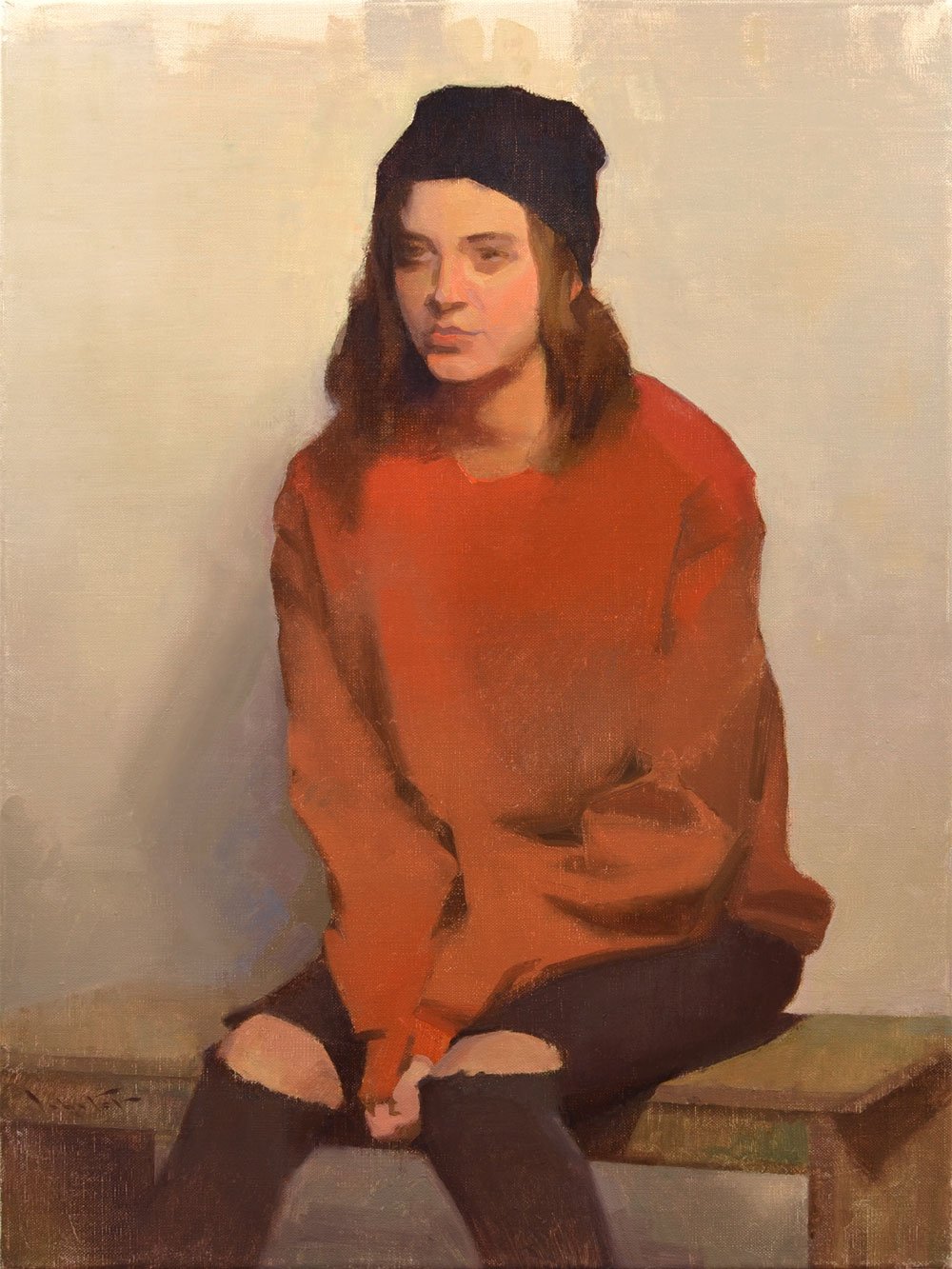
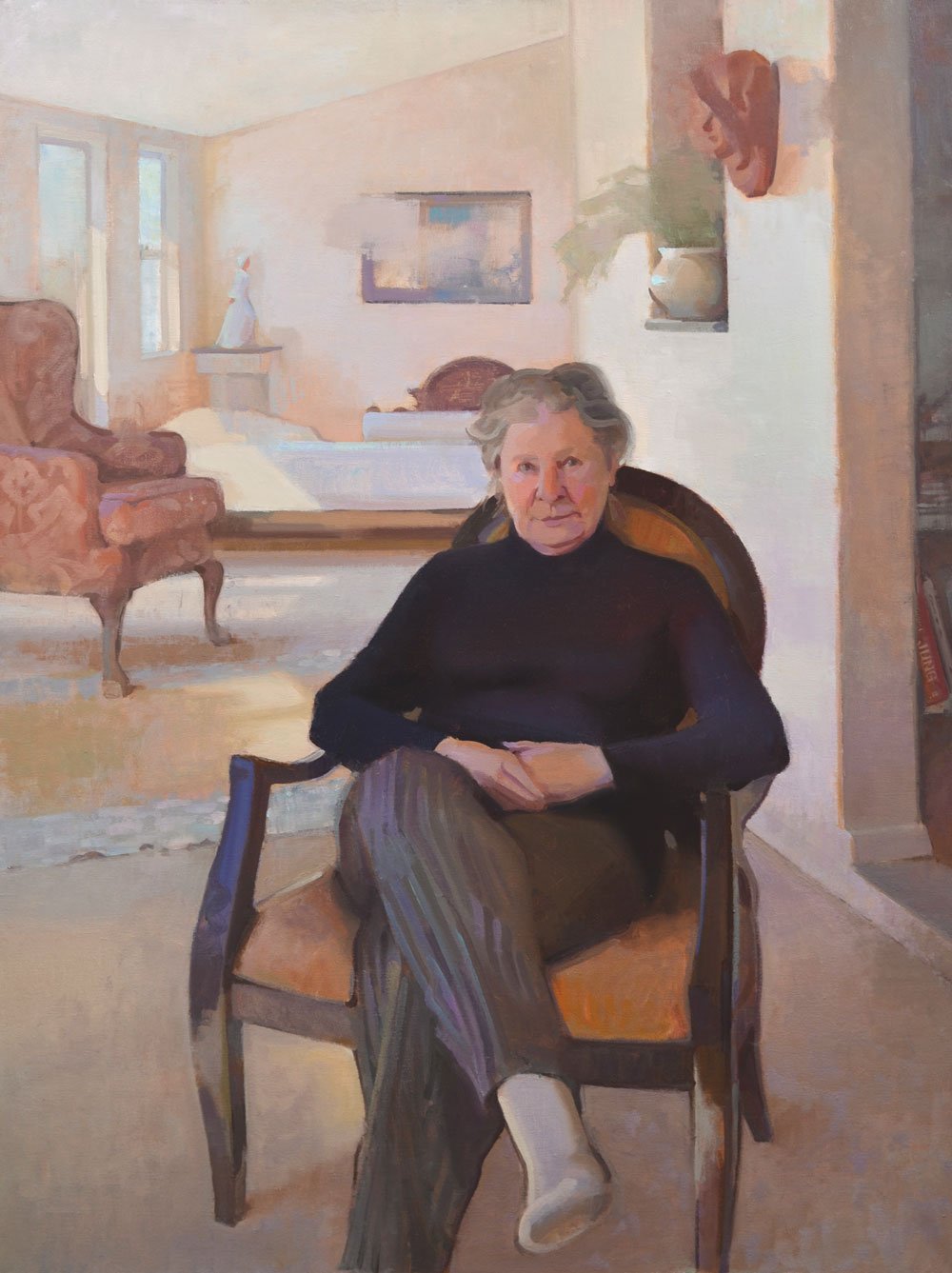
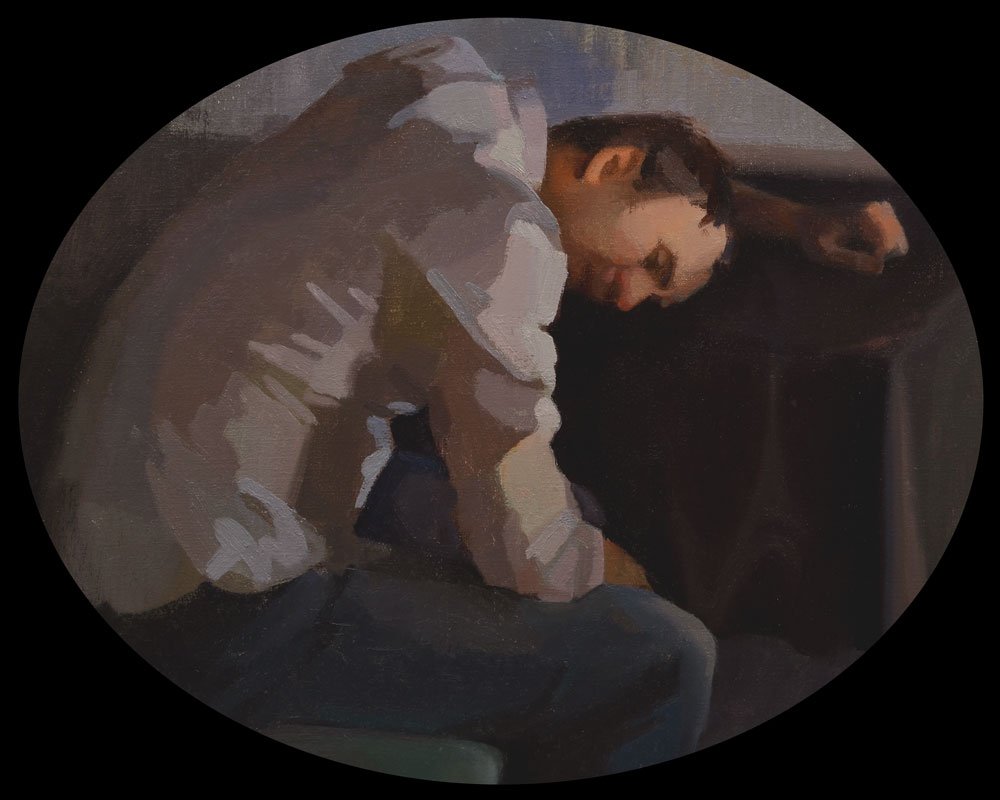
AAS: You’ve conducted plein air workshops all around the continental US and beyond. What has teaching others taught you about yourself and your art?
JL: I represented the tradition of painting pretty poorly in my first workshops. We’ve been handed such valuable knowledge that it’s almost deplorable to teach it without also teaching history. Israel Hershberg said to me, “Would someone training to become the best cellist in the world, start by making their own songs, or would they learn the classics first?” I was pretty convicted by this question. Most of us come in to painting in grade school of course, and it’s silly to think a little kid is going to develop a thorough appreciation of history, but at some point the desire to become a serious artist means a person better start by appreciating great art. Copying is an excellent way to do this.
There isn’t much time in a three-day workshop to teach it all, but I love to introduce students to the passionate appreciation of art history I’ve gained, and share some demonstrations on how to simplify nature and light. Really I’m just setting people up to be self-taught. The reception has been decent, but I think most workshop attendees are searching for a method-teacher that will show them all the tricks.
The thing I’ve gained most by teaching, is the vocabulary of the visual language. It comes in handy with guiding or critiquing paintings. Each soul in the classroom has the potential to be a uniquely different artist, and I want to be humbly respectful of that potential and skillful in explaining the important things.
Anyone is invited to become a part of my Facebook mentorship community called Views Community of Painters. It’s a place where we can drop a post every time we have a revelation or exciting personal experience with painting. We also encourage feedback and critique, and the whole group does a beautiful job of using the vocabulary of the visual language to describe their suggestions. There is a growing database of demonstration videos also. Just ask to become a member if this sounds interesting to you.
AAS: John, you are painting a lot these days. But, where do you see your art practice in the next 5 years
JL: Choosing to pursue art full time has been a real lesson in getting to know myself; my rhythms. I’ve been painting for 13 years now, almost without pause. This past July I made a drastic decision to NOT paint for a month. What a good choice that was, because as soon as the four weeks were over, I was like a dam released to let off the pressure. Since then I’ve been going out into nature to paint every morning, and then in the afternoons I’m painting with fervor in the studio.
Sharing the journey with a friend is a good idea. For about 8 years I travelled with Jason Sacran, who I mentioned earlier and one of the most spirited landscape painters who ever lived, in my humble opinion. Our many discussions about what can and should motivate an artist, and our ramblings and critiques about the state of art, were instrumental in shaping a healthy outlook. As individuals, as painters, we have to find foundational truths or every wind that blows will take us in its direction. Real art transcends the trends of the day; it’s timeless. I’m thankful that I’ve been associated with artists who share the long view with me.
Speaking of the long view, you asked what I might be doing in five years. I’m fresh out of goals because I’m much farther along in my painting career than I ever imagined possible. I think I’m just going to slow down in terms of seeking accolades, and focus on nurturing the community. I want to take those foundational truths I’ve come to believe, and help others see the long view too.
More specifically, my wife and I have talked about traveling more, so maybe within five years I will have more of a transient lifestyle, painting evocative landscapes in other parts of the United States.
